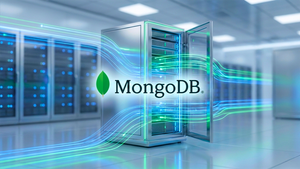
Dayton, Ohio – November 24, 2025 – In a strategic move poised to significantly bolster the U.S. semiconductor industry, the University of Dayton (UD) and International Business Machines Corporation (IBM) (NYSE: IBM) have announced a landmark decade-long collaboration. This partnership, revealed on November 19-20, 2025, represents a combined investment exceeding $20 million and aims to drive innovation in next-generation semiconductor technologies while simultaneously cultivating a highly skilled workforce crucial for advanced chip manufacturing.
This academic-industrial alliance comes at a critical juncture for the semiconductor sector, which is experiencing robust growth fueled by AI and high-performance computing, alongside persistent challenges like talent shortages and geopolitical pressures. The UD-IBM initiative underscores the growing recognition that bridging the gap between academia and industry is paramount for maintaining technological leadership and securing domestic supply chains in this foundational industry.
A Deep Dive into Next-Gen Chip Development and Talent Cultivation
The UD-IBM collaboration is meticulously structured to tackle both research frontiers and workforce development needs. At its core, the partnership will focus on advanced semiconductor technologies and materials vital for the age of artificial intelligence. Key research areas include advanced AI hardware, sophisticated packaging solutions, and photonics – all critical components for future computing paradigms.
A cornerstone of this initiative is the establishment of a cutting-edge semiconductor nanofabrication facility within UD's School of Engineering, slated to open in early 2027. IBM is contributing over $10 million in state-of-the-art semiconductor equipment for this facility, which UD will match with comparable resources. This "lab-to-fab" environment will offer invaluable hands-on experience for graduate and undergraduate students, complementing UD's existing Class 100 semiconductor clean room. Furthermore, the University of Dayton is launching a new co-major in semiconductor manufacturing engineering, designed to equip the next generation of engineers and technical professionals with industry-relevant skills. Research projects will be jointly guided by UD faculty and IBM technical leaders, ensuring direct industry engagement and mentorship for students. This integrated approach significantly differs from traditional academic research models by embedding industrial expertise directly into the educational and research process, thereby accelerating the transition from theoretical breakthroughs to practical applications. The initial reactions from the AI research community and industry experts have been overwhelmingly positive, viewing this as a model for addressing the complex demands of modern semiconductor innovation and talent pipelines.
Reshaping the Semiconductor Landscape: Competitive Implications
This strategic alliance carries significant implications for major AI companies, tech giants, and startups alike. IBM stands to directly benefit by gaining access to cutting-edge academic research, a pipeline of highly trained talent, and a dedicated facility for exploring advanced semiconductor concepts without the full burden of internal R&D costs. This partnership allows IBM to strengthen its position in critical areas like AI hardware and advanced packaging, potentially enhancing its competitive edge against rivals such as NVIDIA, Intel, and AMD in the race for next-generation computing architectures.
For the broader semiconductor industry, such collaborations are a clear signal of the industry's commitment to innovation and domestic manufacturing, especially in light of initiatives like the U.S. CHIPS Act. Companies like Taiwan Semiconductor Manufacturing Co. (TSMC), while leading in foundry services, could see increased competition in R&D as more localized innovation hubs emerge. Startups in the AI hardware space could also benefit indirectly from the talent pool and research advancements emanating from such partnerships, fostering a more vibrant ecosystem for new ventures. The potential disruption to existing products or services lies in the accelerated development of novel materials and architectures, which could render current technologies less efficient or effective over time. This initiative strengthens the U.S.'s market positioning and strategic advantages in advanced manufacturing and AI, mitigating reliance on foreign supply chains and intellectual property.
Broader Significance in the AI and Tech Landscape
The UD-IBM collaboration fits seamlessly into the broader AI landscape and the prevailing trends of deep technological integration and strategic national investment. As AI continues to drive unprecedented demand for specialized computing power, the need for innovative semiconductor materials, advanced packaging, and energy-efficient designs becomes paramount. This partnership directly addresses these needs, positioning the Dayton region and the U.S. as a whole at the forefront of AI hardware development.
The impacts extend beyond technological advancements; the initiative aims to strengthen the technology ecosystem in the Dayton, Ohio region, attract new businesses, and bolster advanced manufacturing capabilities, enhancing the region's national profile. Given the region's ties to Wright-Patterson Air Force Base, this collaboration also has significant implications for national security by ensuring a robust domestic capability in critical defense technologies. Potential concerns, however, could include the challenge of scaling academic research to industrial production volumes and ensuring equitable access to the innovations for smaller players. Nevertheless, this partnership stands as a significant milestone, comparable to previous breakthroughs that established key research hubs and talent pipelines, demonstrating a proactive approach to securing future technological leadership.
The Horizon: Future Developments and Expert Predictions
Looking ahead, the UD-IBM partnership is expected to yield several near-term and long-term developments. In the near term, the focus will be on the successful establishment and operationalization of the nanofabrication facility by early 2027 and the enrollment of students in the new semiconductor manufacturing engineering co-major. We can anticipate initial research outcomes in advanced packaging and AI hardware designs within the next 3-5 years, potentially leading to published papers and early-stage prototypes.
Potential applications and use cases on the horizon include more powerful and energy-efficient AI accelerators, novel quantum computing components, and specialized chips for autonomous systems and edge AI. Challenges that need to be addressed include attracting sufficient numbers of students to meet the escalating demand for semiconductor professionals, securing continuous funding beyond the initial decade, and effectively translating complex academic research into commercially viable products at scale. Experts predict that such robust academic-industrial partnerships will become increasingly vital, fostering regional technology hubs and decentralizing semiconductor innovation, thereby strengthening national competitiveness in the face of global supply chain vulnerabilities and geopolitical tensions. The success of this model could inspire similar collaborations across other critical technology sectors.
A Blueprint for American Semiconductor Leadership
The UD-IBM collaboration represents a pivotal moment in the ongoing narrative of American semiconductor innovation and workforce development. The key takeaways are clear: integrated academic-industrial partnerships are indispensable for driving next-generation technology, cultivating a skilled talent pipeline, and securing national competitiveness in a strategically vital sector. By combining IBM's industrial might and technological expertise with the University of Dayton's research capabilities and educational infrastructure, this initiative sets a powerful precedent for how the U.S. can address the complex challenges of advanced manufacturing and AI.
This development's significance in AI history cannot be overstated; it’s a tangible step towards building the foundational hardware necessary for the continued explosion of AI capabilities. The long-term impact will likely be seen in a stronger domestic semiconductor ecosystem, a more resilient supply chain, and a continuous stream of innovation driving economic growth and technological leadership. In the coming weeks and months, the industry will be watching for updates on the nanofabrication facility's progress, curriculum development for the new co-major, and the initial research projects that will define the early successes of this ambitious and crucial partnership.
This content is intended for informational purposes only and represents analysis of current AI developments.
TokenRing AI delivers enterprise-grade solutions for multi-agent AI workflow orchestration, AI-powered development tools, and seamless remote collaboration platforms.
For more information, visit https://www.tokenring.ai/.





